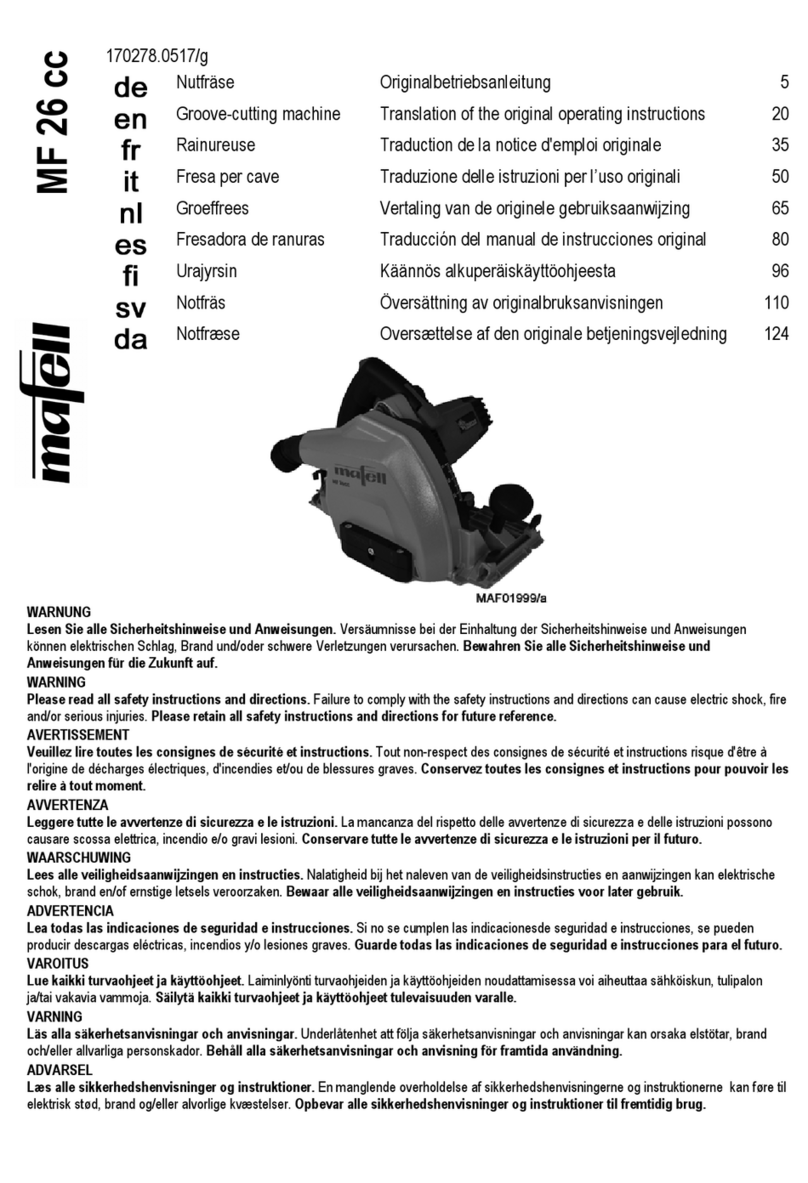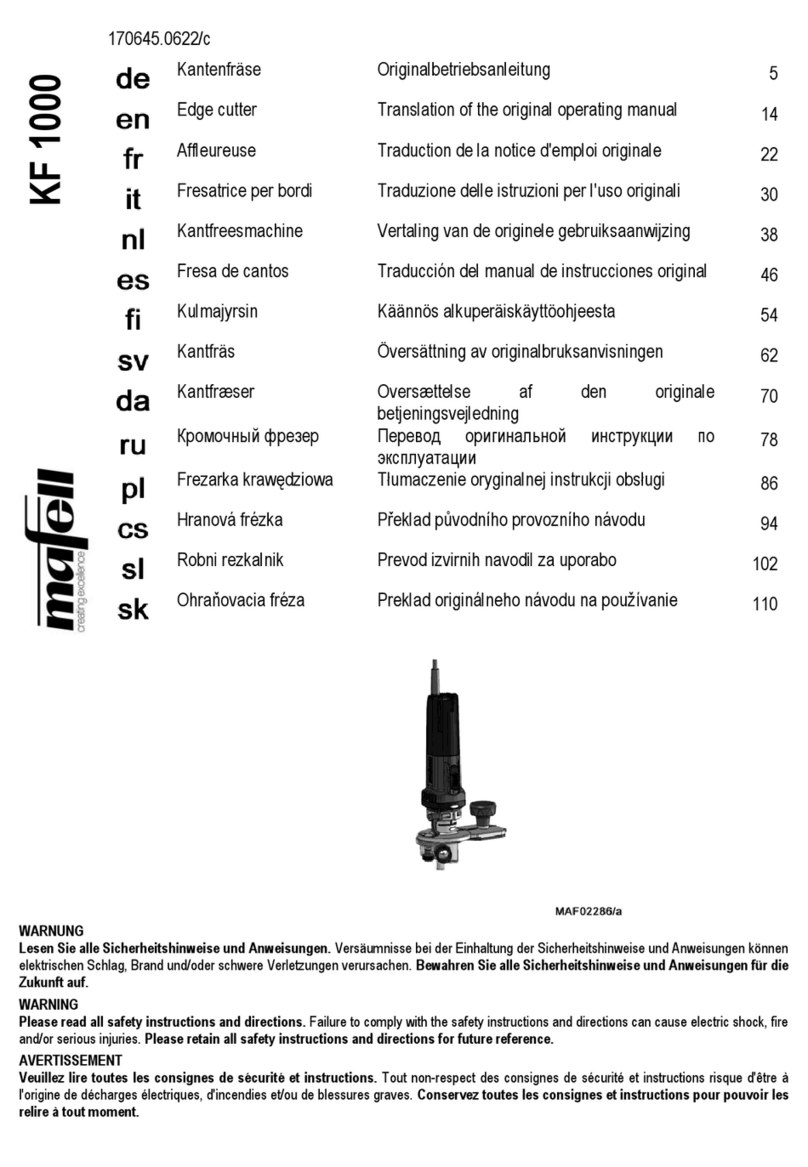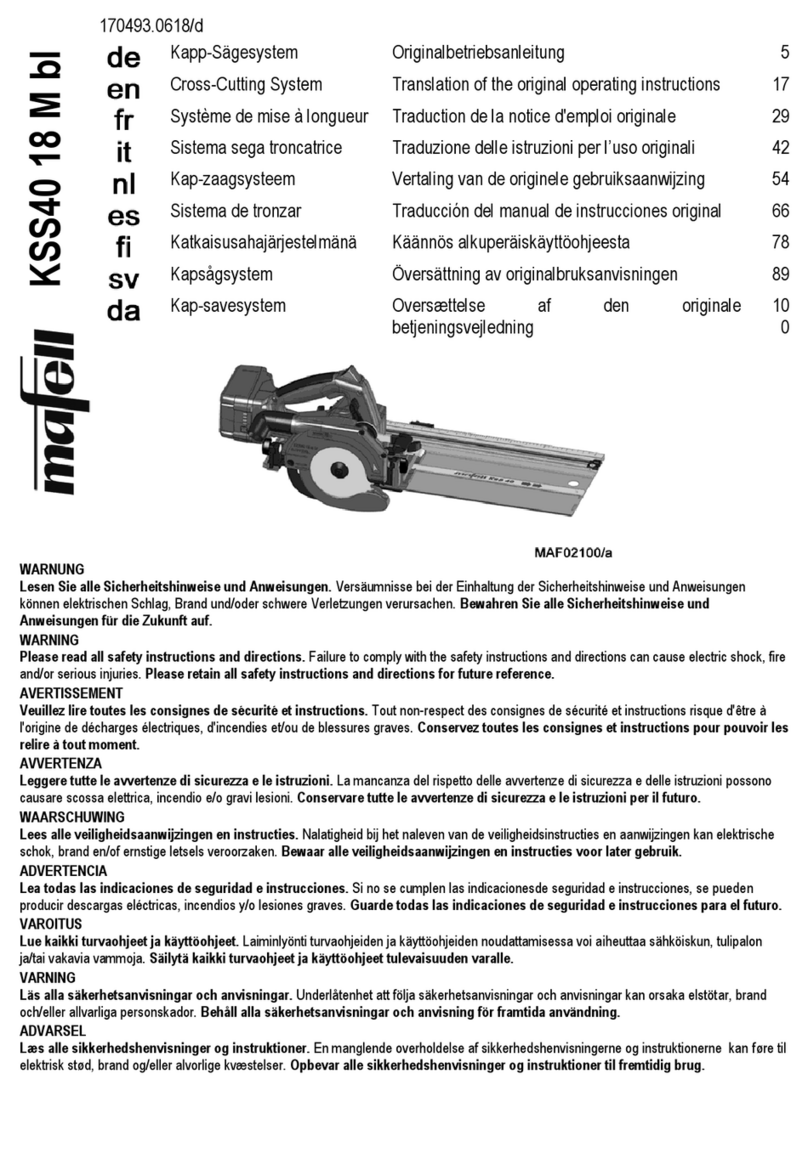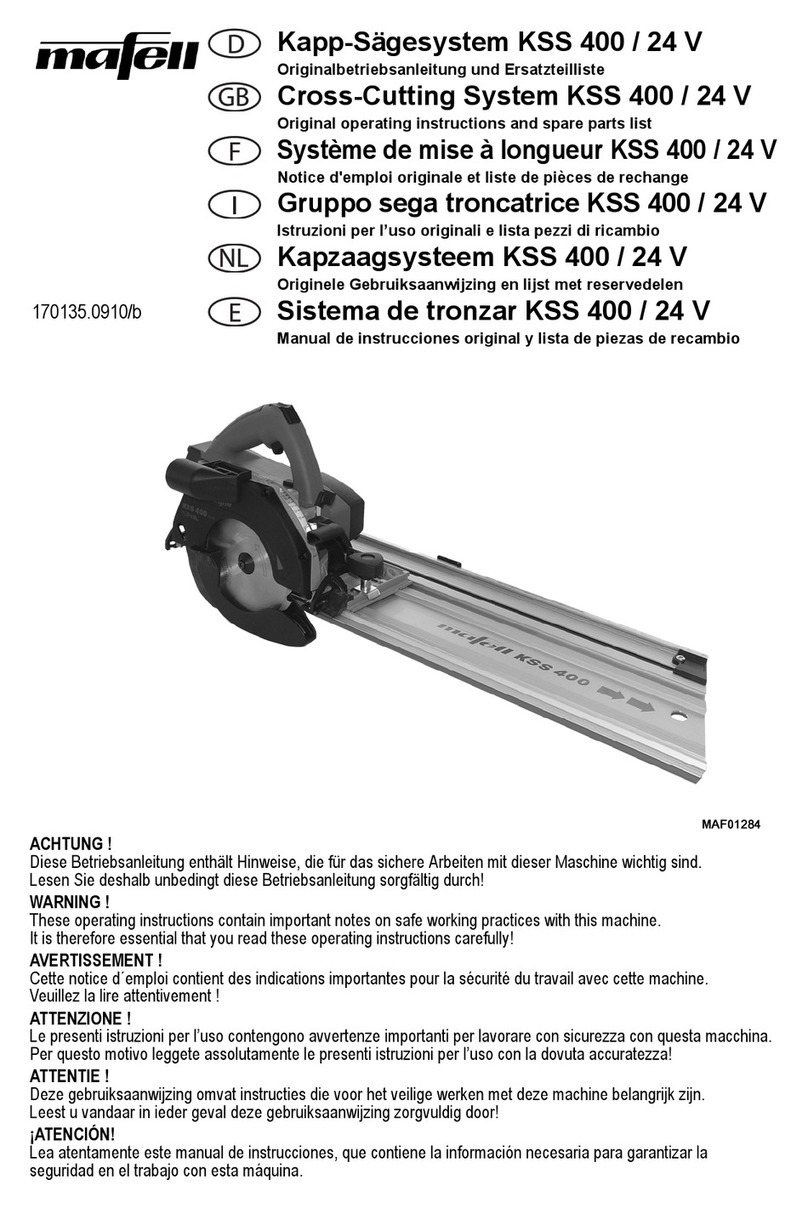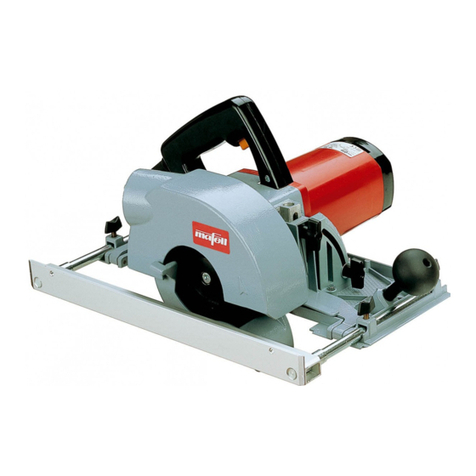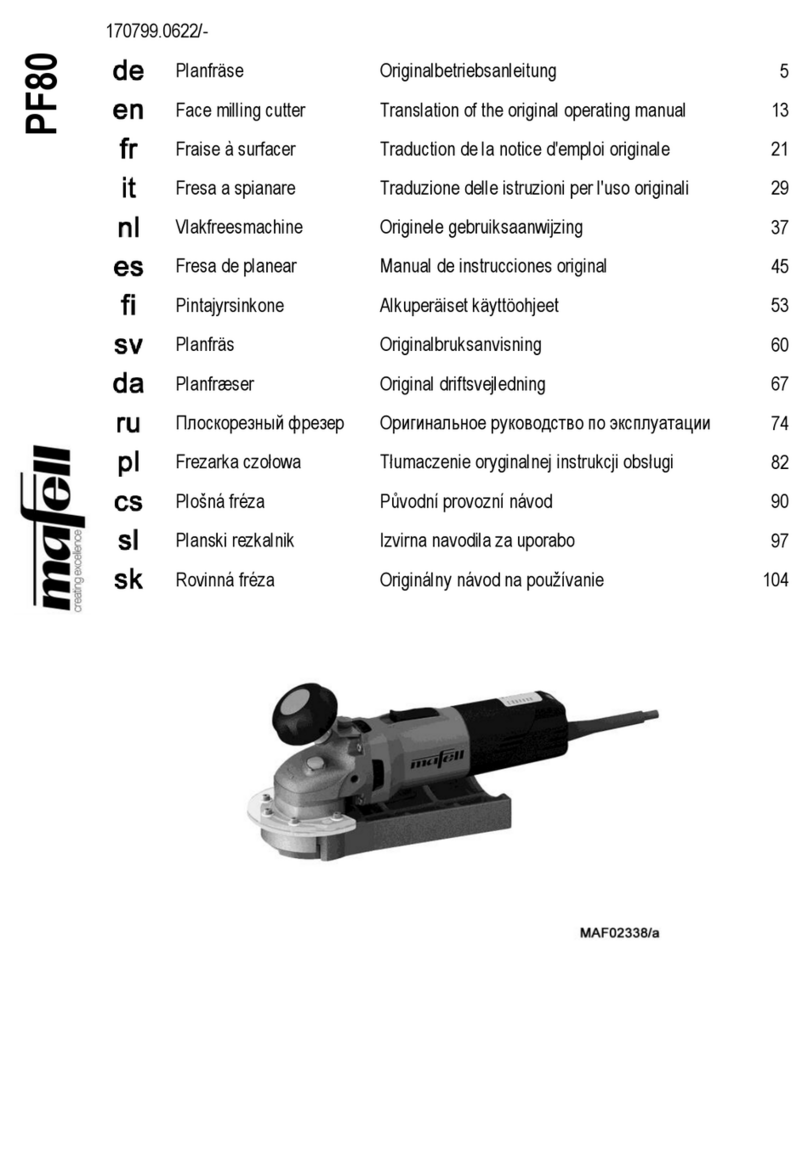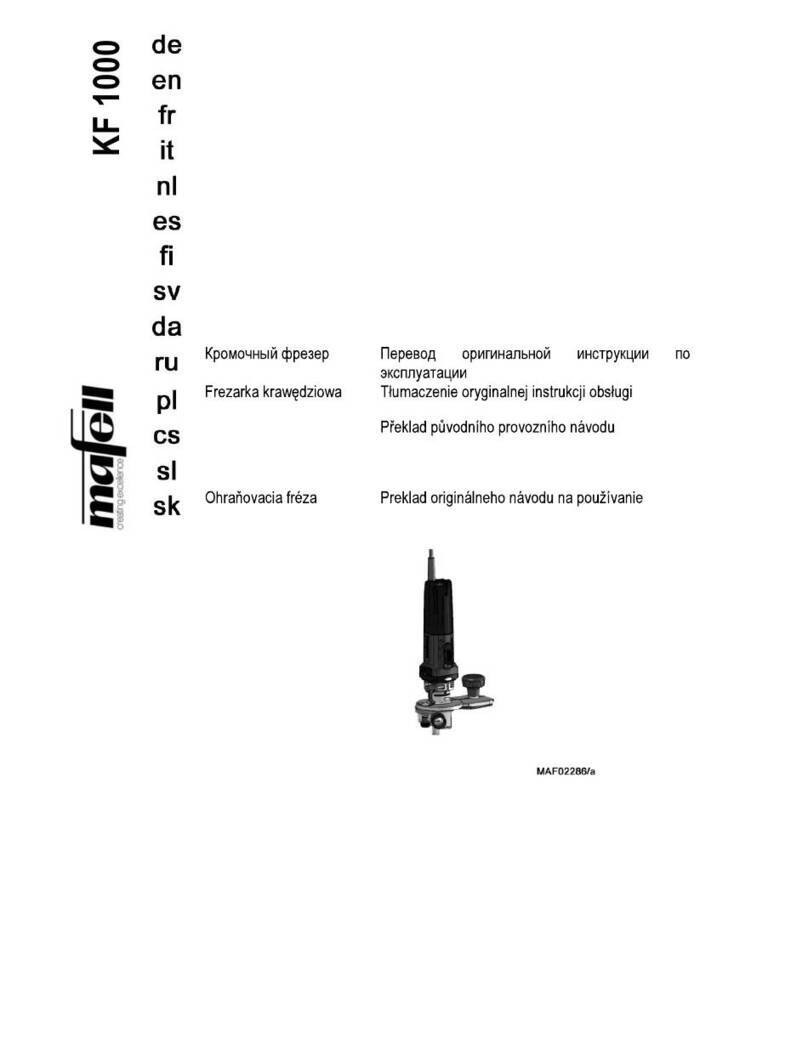
-19-
-Never work without the protective equipment
required for the work to be undertaken and never
modify anything on the machine that could impair
safety.
-Children and adolescents must not operate this
machine. This rule does not apply to young
persons receiving training and being supervised by
an expert.
-Before working with the machine, always check to
ensure that the protective and safety devices are
firmly in place and undamaged, that they work
faultlessly and that the the moving protective hood
works without getting stuck.
-Consider environmental influences. Do not expose
the machine to rain and avoid working in damp and
wet areas as well as near combustible liquids and
gasses.
-When operating the machine outdoors, use of an
earth-leakage circuit-breaker is recommended.
-Do not carry the machine by its cable and do not
use the cable to pull the plug out of the socket
outlet.
-Pay attention that the cable is protected against oil
and heat and is not pulled across sharp edges.
-Damaged cables or plugs must be immediately
replaced.
-Avoid sharp bends in the cable. Especially when
transporting and storing the machine, do not wind
the cable around the machine.
-Use only cutter heads with the specifications
indicated in this operating manual.
-Store the machine in a dry, locked place outside
the reach of children.
Instructions on the use of personal protective
equipment:
-Always wear ear protectors during work.
-Always where a dust mark during work.
-Always wear protective goggles during work.
Instructions on operation:
-Provide for an unobstructed and slip-proof location
with adequate lighting.
-Unplug the power cord before changing tools,
making adjustments or rectifying faults (including
the removal of jammed chips).
-Do not work on workpieces which are too small or
too large for the capability of the machine.
-Install and fasten the cutter head properly. Use
sharp cutters and taper taps; dull cutters increase
the risk of kickout. Immediately replace damaged
cutters and taper taps and fasten them so that they
cannot become loose operation.
-The moving protective hood must not be blocked
when open.
-The switch may not be wedged.
-Before switching on the machine, always check
whether the cutter head is tightened and whether
the wrench and pin have been removed.
-If possible ensure that the workpiece is secured
from slippage, e.g. with tension clamps.
-Hold firmly onto the machine before switching it on.
-Begin cutting the workpiece only when the cutter
head reaches its full speed.
-Examine the workpiece for foreign objects. Do not
cut into metal parts, e.g. nails.
-Never reach under the workpiece while cutting
(risk of injury!).
-When cutting always have the connecting cable
behind the machine.
-An even forward feed when cutting extends the
service life of the cutting bit and the machine. Do
not cut backwards or by dipping.
-Remove the machine from the workpiece only
when the cutter head is at a standstill.
-Never touch the cutter head or reach into the chip
ejector while the machine is running. Always
switch off the machine before making adjustments
and ensure that the cutter head has come to a
standstill.
-Set the machine down only when the moving
protective hood is closed. Do not clamp the moving
protective hood or end guard, and ensure that they
work properly. Do not remove protective parts.
-The bird's head cutter may be used only outside or
in open areas, as effective extraction is not
possible.
Instructions on service and maintenance:
-Regularly cleaning the machine, especially the
adjusting devices and guides, constitutes an
important safety factor.

